The family Vangidae (from vanga, Malagasy for the hook-billed vanga, Vanga curvirostris) comprises a group of often shrike-like medium-sized birds distributed from Asia to Africa, including the vangas of Madagascar to which the family owes its name. Many species in this family were previously classified elsewhere in other families. Recent molecular techniques made it possible to assign these species to Vangidae, thereby solving several taxonomic enigmas.
Helmetshrikes are a subfamily uniting some smallish to mid-sized songbird species. They were included with the true shrikes in the family Laniidae, later on split between several presumably closely related groups such as bushshrikes (Malaconotidae) and cuckooshrikes (Campephagidae), but are now considered sufficiently distinctive to be separated from that group into the family Vangidae (Vangas and allies).
This is an African group of species which are found in scrub or open woodland. They are similar in feeding habits to shrikes, hunting insects and other small prey from a perch on a bush or tree.
Although similar in build to the shrikes, these tend to be colourful species with the distinctive crests or other head ornaments, such as wattles, from which they get their name.
Helmetshrikes are noisy and sociable birds, some of which breed in loose colonies. They lay 2–4 eggs in neat, well-hidden nests.
Africa Wild Bird Book
Family Vangidae Index
Family Vangidae
Prionops plumatus White-crested Helmet-Shrike 753
Prionops retzii Retz's Helmet-Shrike 754
Prionops scopifrons Chestnut-fronted Helmet-Shrike 755
Prionops plumatus White-crested Helmet-Shrike 753
Prionops retzii Retz's Helmet-Shrike 754
Prionops scopifrons Chestnut-fronted Helmet-Shrike 755
- nan
- Posts: 26451
- Joined: Thu May 31, 2012 9:41 pm
- Country: Switzerland
- Location: Central Europe
- Contact:
White-crested Helmetshrike
753. White-crested Helmetshrike (formerly known as White Helmetshrike) Prionops plumatus (Whitelmlaksman)
Order: Passeriformes. Family: Vangidae

Description
Size 17-20 cm. The grey crown, white collar, white flashes in the wings and white outer tail feathers are diagnostic. It is a gregarious and conspicuous species.
Juvenile is duller than adult, with a brown eye; it lacks the yellow-eye-ring and black ear coverts.
Distribution
Widespread across sub-Saharan Africa, absent only from parts of Somalia and the lowland forest of West-Central Africa. In southern Africa it is common from Zimbabwe, Mozambique and the Kruger National Park through Botswana to northern Namibia.

Habitat
Mixed woodland and thornveld. It is quite habitat-specific during the breeding season, preferring deciduous broad-leaved woodland, such as Miombo, Mopane and Burkea woodland. In the non-breeding season it moves more into other habitats, including Acacia savanna and suburban gardens.
Diet
It mainly eats invertebrates, especially moths and caterpillars. During summer it mainly forages in the tree canopy, whereas in winter it catches more of its prey on the ground.
Breeding
It is a monogamous cooperative breeder, meaning that the breeding pair are helped by their siblings and/or youngsters from the previous year's breeding season, thus forming a group. If one of the breeding pair dies, he/she is replaced with one of their siblings. Groups are territorial, noisily defending themselves against other groups and predators. The nest is a small cup made of bark bound together with spider web and lined with soft material. The breeding pair do most of the construction, usually placing it in the horizontal fork of a tree branch 2-10m above ground. The same nest sit is often used over multiple breeding seasons. The breeding female lays 2-5 eggs, which are incubated in shifts by all the group members over a period of about 16-21 days. The chicks are cared for by all group members - while 1-2 of them are out foraging, one adult guards the nest from predators and another broods the chicks. They leave the nest at about 17-22 days old, becoming fully independent about a 5 months later.
Call
Usually given as a group chorus, a ratchety krawow, krawow, kree, kreeepkraw. Listen to Bird Call.
Status
Common resident.
Order: Passeriformes. Family: Vangidae

Description
Size 17-20 cm. The grey crown, white collar, white flashes in the wings and white outer tail feathers are diagnostic. It is a gregarious and conspicuous species.
Juvenile is duller than adult, with a brown eye; it lacks the yellow-eye-ring and black ear coverts.
Distribution
Widespread across sub-Saharan Africa, absent only from parts of Somalia and the lowland forest of West-Central Africa. In southern Africa it is common from Zimbabwe, Mozambique and the Kruger National Park through Botswana to northern Namibia.

Habitat
Mixed woodland and thornveld. It is quite habitat-specific during the breeding season, preferring deciduous broad-leaved woodland, such as Miombo, Mopane and Burkea woodland. In the non-breeding season it moves more into other habitats, including Acacia savanna and suburban gardens.
Diet
It mainly eats invertebrates, especially moths and caterpillars. During summer it mainly forages in the tree canopy, whereas in winter it catches more of its prey on the ground.
Breeding
It is a monogamous cooperative breeder, meaning that the breeding pair are helped by their siblings and/or youngsters from the previous year's breeding season, thus forming a group. If one of the breeding pair dies, he/she is replaced with one of their siblings. Groups are territorial, noisily defending themselves against other groups and predators. The nest is a small cup made of bark bound together with spider web and lined with soft material. The breeding pair do most of the construction, usually placing it in the horizontal fork of a tree branch 2-10m above ground. The same nest sit is often used over multiple breeding seasons. The breeding female lays 2-5 eggs, which are incubated in shifts by all the group members over a period of about 16-21 days. The chicks are cared for by all group members - while 1-2 of them are out foraging, one adult guards the nest from predators and another broods the chicks. They leave the nest at about 17-22 days old, becoming fully independent about a 5 months later.
Call
Usually given as a group chorus, a ratchety krawow, krawow, kree, kreeepkraw. Listen to Bird Call.
Status
Common resident.
Kgalagadi lover… for ever
https://safrounet.piwigo.com/
https://safrounet.piwigo.com/
- nan
- Posts: 26451
- Joined: Thu May 31, 2012 9:41 pm
- Country: Switzerland
- Location: Central Europe
- Contact:
White-crested Helmetshrike Photos
753. White-crested Helmetshrike Prionops plumatus
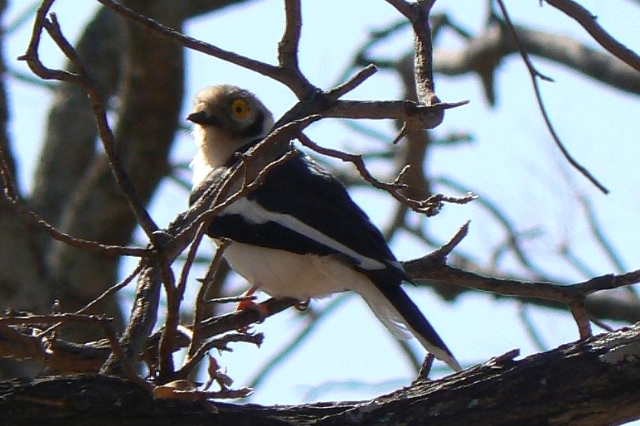 © Toko
© Toko
Marakele National Park
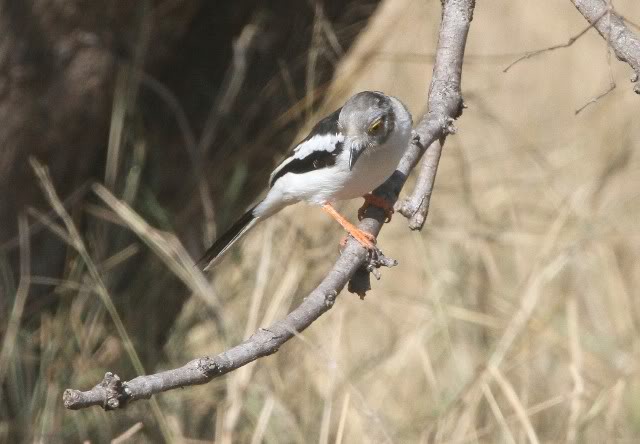 © nan
© nan
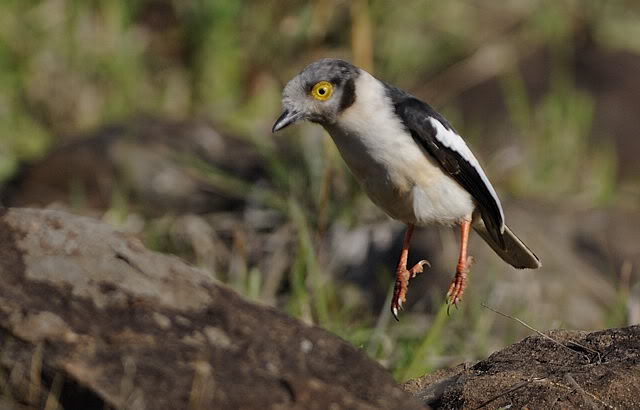 © Dewi
© Dewi
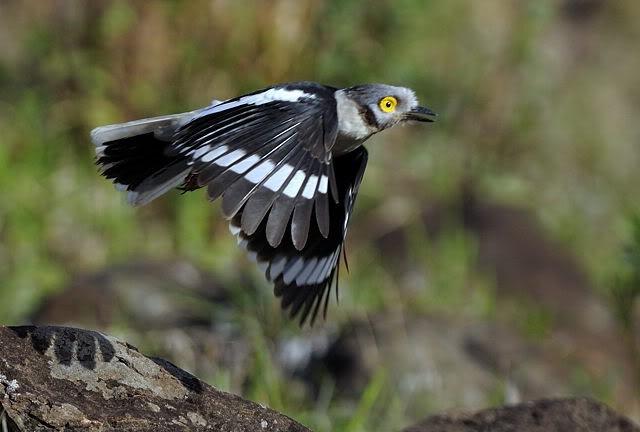 © Dewi
© Dewi
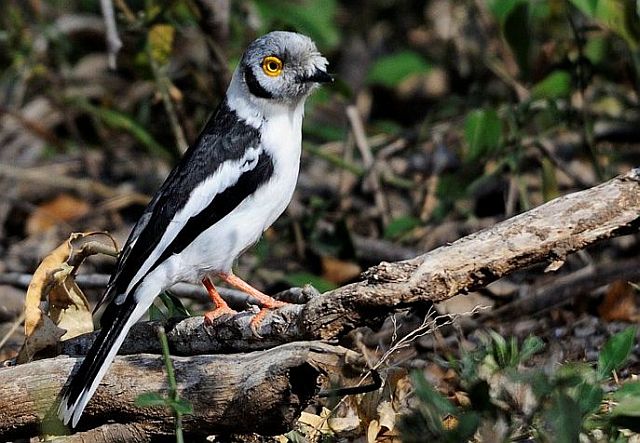 © Dewi
© Dewi
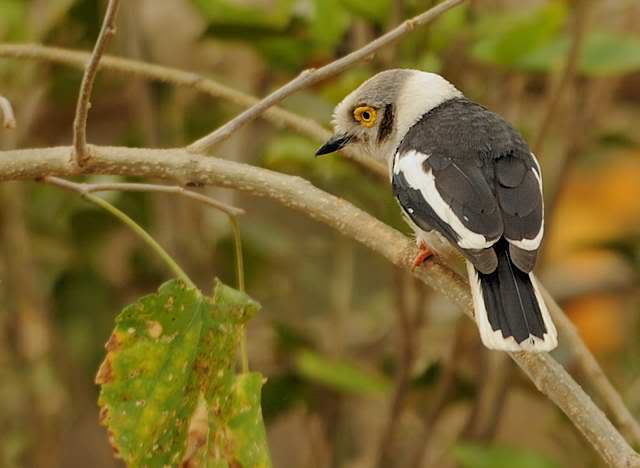 © Dewi
© Dewi
Kruger National Park
Links:
Species Text Sabap1
Sabap2
oiseaux net
Ian Sinclair. SASOL VOELS VAN SUIDER AFRICA (3de UIT)
 © Toko
© TokoMarakele National Park
 © nan
© nan © Dewi
© Dewi © Dewi
© Dewi © Dewi
© Dewi © Dewi
© DewiKruger National Park
Links:
Species Text Sabap1
Sabap2
oiseaux net
Ian Sinclair. SASOL VOELS VAN SUIDER AFRICA (3de UIT)
Kgalagadi lover… for ever
https://safrounet.piwigo.com/
https://safrounet.piwigo.com/
Retz's Helmetshrike
754. Retz's Helmetshrike (Formerly known as Red-billed Helmetshrike) Prionops retzii (Swarthelmlaksman)
Order: Passeriformes. Family: Vangidae
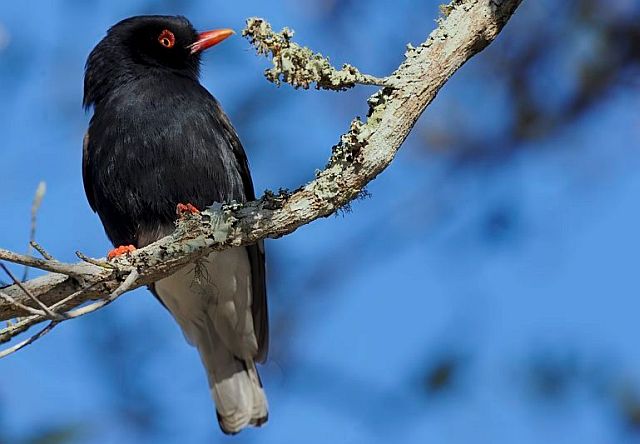 © Dewi
© Dewi
Description
Size 19-21 cm. Mostly black with a brownish wash on the back and wing coverts. White vent with white underwing flashes. Outer tips of the tail also show white flashes. Has a red eye ring with yellow iris. Red bill.
Red bill, legs and eye wattle are missing or subdued in the juvenile.
Distribution
Mostly in the Northeast and in a narrow belt along the northern parts of the sub-region, from southern Somalia to Angola and north-eastern South Africa.

Habitat
It breeds in tall deciduous woodland (Miombo, Mopane and Burkea woodland), non-breeding birds move in to a wider variety of habitats, including suburban gardens, Acacia savanna and riverine forest.
Diet
It feeds on invertebrates found mainly on branches, trunks and twigs. Forages in small flocks which move from tree to tree in a methodical search pattern.
Breeding
Monogamous, cooperative breeder (the breeding pair are helped by their siblings or youngsters from the previous breeding season, thus forming a group). The nest is a small cup made of bark, grass and lichen bound together with spider web. Nest construction duties are usually shared quite equally between the group members. Egg-laying season usually begins with the miombo tree coming to leaf, around October-November. the female lays 3-5 eggs, which are incubated by all group members for about 17-20 days. The chicks are brooded, fed and guarded by all members of the group. The brood stay in the nest for about 20 days, becoming fully independent about 7 months later.
Call
Wide variety of weird grating tweeooh-tweew notes. Listen to Bird Call.
Status
Fairly common resident.
Order: Passeriformes. Family: Vangidae
 © Dewi
© DewiDescription
Size 19-21 cm. Mostly black with a brownish wash on the back and wing coverts. White vent with white underwing flashes. Outer tips of the tail also show white flashes. Has a red eye ring with yellow iris. Red bill.
Red bill, legs and eye wattle are missing or subdued in the juvenile.
Distribution
Mostly in the Northeast and in a narrow belt along the northern parts of the sub-region, from southern Somalia to Angola and north-eastern South Africa.

Habitat
It breeds in tall deciduous woodland (Miombo, Mopane and Burkea woodland), non-breeding birds move in to a wider variety of habitats, including suburban gardens, Acacia savanna and riverine forest.
Diet
It feeds on invertebrates found mainly on branches, trunks and twigs. Forages in small flocks which move from tree to tree in a methodical search pattern.
Breeding
Monogamous, cooperative breeder (the breeding pair are helped by their siblings or youngsters from the previous breeding season, thus forming a group). The nest is a small cup made of bark, grass and lichen bound together with spider web. Nest construction duties are usually shared quite equally between the group members. Egg-laying season usually begins with the miombo tree coming to leaf, around October-November. the female lays 3-5 eggs, which are incubated by all group members for about 17-20 days. The chicks are brooded, fed and guarded by all members of the group. The brood stay in the nest for about 20 days, becoming fully independent about 7 months later.
Call
Wide variety of weird grating tweeooh-tweew notes. Listen to Bird Call.
Status
Fairly common resident.
Dewi
What is the good of having a nice house without a decent planet to put it on? (H D Thoreau)
What is the good of having a nice house without a decent planet to put it on? (H D Thoreau)
Retz's Helmetshrike Photos
754. Retz's Helmetshrike Prionops retzii
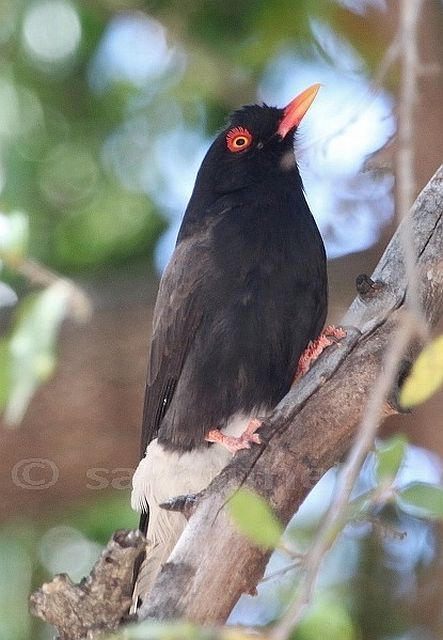 © nan
© nan
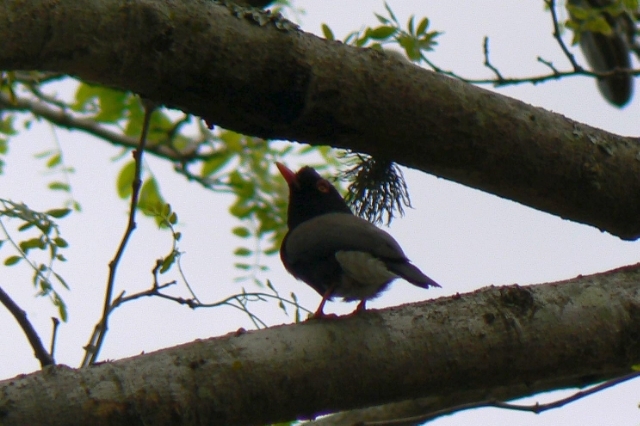 © Toko
© Toko
Tembe Elephant Park
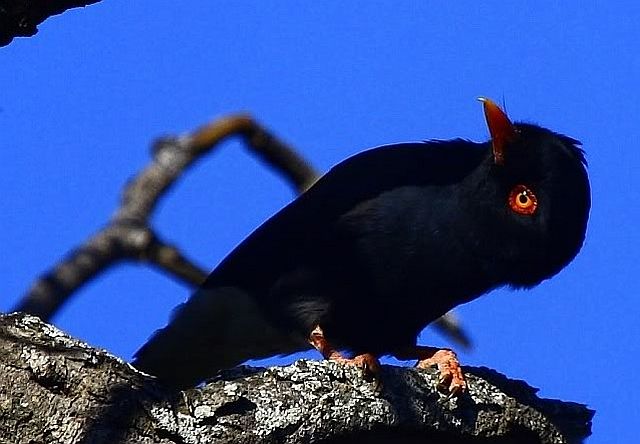 © Duke
© Duke
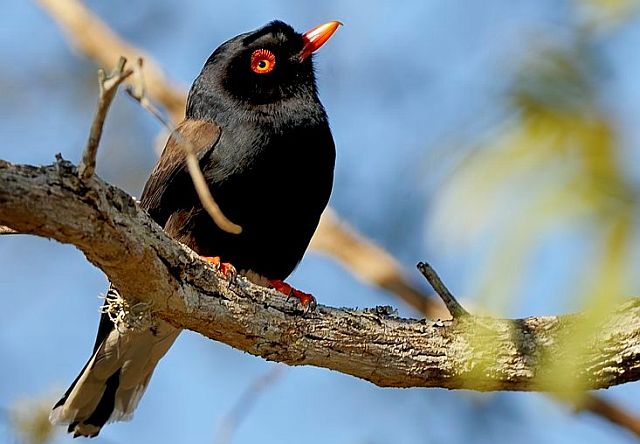 © Dewi
© Dewi
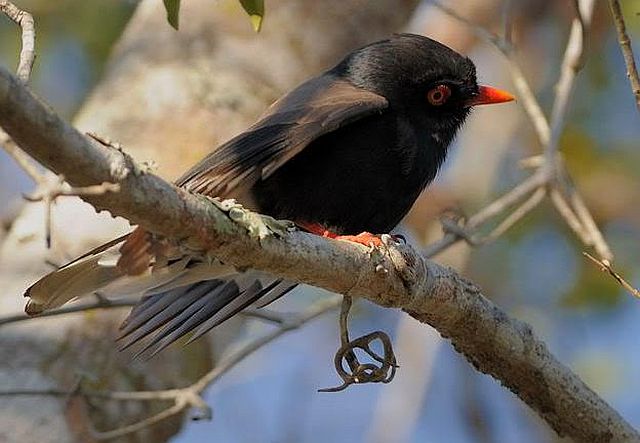 © Dewi
© Dewi
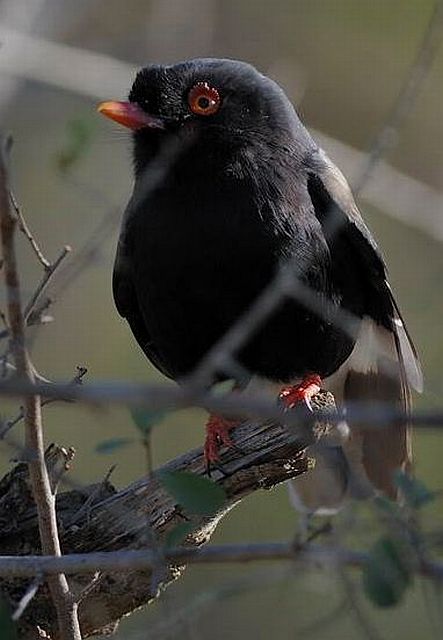 © Dewi
© Dewi
Links:
Species Text Sabap1
Sabap2
Ian Sinclair. SASOL VOELS VAN SUIDER AFRICA (3de UIT)
 © nan
© nan © Toko
© TokoTembe Elephant Park
 © Duke
© Duke © Dewi
© Dewi © Dewi
© Dewi © Dewi
© DewiLinks:
Species Text Sabap1
Sabap2
Ian Sinclair. SASOL VOELS VAN SUIDER AFRICA (3de UIT)
Dewi
What is the good of having a nice house without a decent planet to put it on? (H D Thoreau)
What is the good of having a nice house without a decent planet to put it on? (H D Thoreau)
Family Malaconotidae (Bushshrikes)
The bushshrikes are smallish passerine bird species. They were formerly classed with the true shrikes in the family Laniidae, but are now considered sufficiently distinctive to be separated from that group as the family Malaconotidae. There are 50 present species in the family of Malaconotidae. This is an African group of species which are found in scrub or open woodland. They are similar in habits to shrikes, hunting insects and other small prey from a perch on a bush. Although similar in build to the shrikes, these tend to be either colourful species or largely black; some species are quite secretive.
Some bushshrikes have flamboyant displays. The male puffbacks puff out the loose feathers on their rump and lower back, to look almost ball-like.
Bushshrikes are small to medium-sized passerines with robust, usually hooked and toothed bill, and long, lax and erectile rump feathers; plumage black, black and white, or boldly patterned mainly in green, yellow or russet and scarlet; several polymorphic. Some bush shrikes have red undersides or red throat-patches.
Bushshrikes typically inhabit forest margins or patches of bush in savannah. Some species have been known to inhabit coffee plantations.
Bushshrike diets consist mainly of large insects, but occasionally may include wild fruits and berries and sometimes rodents. They catch their prey by gleaning among tree foliage.
Their nests are generally small and neat, and they lay clutches of 2-3 eggs.
Bushshrikes have distinctive harsh or guttural calls, which may be sung as duets. Male and female birds are able to learn songs of similar complexity, and both sexes have similarly-sized repertoire. Songs may be sung to indicate territory or as part of courtship.
Some bushshrikes have flamboyant displays. The male puffbacks puff out the loose feathers on their rump and lower back, to look almost ball-like.
Bushshrikes are small to medium-sized passerines with robust, usually hooked and toothed bill, and long, lax and erectile rump feathers; plumage black, black and white, or boldly patterned mainly in green, yellow or russet and scarlet; several polymorphic. Some bush shrikes have red undersides or red throat-patches.
Bushshrikes typically inhabit forest margins or patches of bush in savannah. Some species have been known to inhabit coffee plantations.
Bushshrike diets consist mainly of large insects, but occasionally may include wild fruits and berries and sometimes rodents. They catch their prey by gleaning among tree foliage.
Their nests are generally small and neat, and they lay clutches of 2-3 eggs.
Bushshrikes have distinctive harsh or guttural calls, which may be sung as duets. Male and female birds are able to learn songs of similar complexity, and both sexes have similarly-sized repertoire. Songs may be sung to indicate territory or as part of courtship.
Family Malaconotidae (Bushshrikes) Index
Family Malaconotidae Bushshrikes
Malaconotus blanchoti Grey-headed Bushshrike 751
Chlorophoneus nigrifrons Black-fronted Bushshrike 749
Chlorophoneus olivaceus Olive Bushshrike 750
Chlorophoneus sulfureopectus Orange-breasted Bushshrike 748
Telophorus viridis Gorgeous Bushshrike 747
Telophorus quadricolor Four-colored Bushshrike
Telophorus zeylonus Bokmakierie 746
Bocagia minuta Marsh Tchagra, Anchieta's Tchagra 745
Tchagra australis Brown-crowned Tchagra 743
Tchagra tchagra Southern Tchagra 742
Tchagra senegalus Black-crowned Tchagra 744
Dryoscopus cubla Black-backed Puffback 740
Laniarius major Tropical Boubou 737
Laniarius ferrugineus Southern Boubou 736
Laniarius bicolor Swamp Boubou 738
Laniarius atrococcineus Crimson-breasted Shrike, Crimson-breasted Boubou 739
Nilaus afer Brubru 741
Malaconotus blanchoti Grey-headed Bushshrike 751
Chlorophoneus nigrifrons Black-fronted Bushshrike 749
Chlorophoneus olivaceus Olive Bushshrike 750
Chlorophoneus sulfureopectus Orange-breasted Bushshrike 748
Telophorus viridis Gorgeous Bushshrike 747
Telophorus quadricolor Four-colored Bushshrike
Telophorus zeylonus Bokmakierie 746
Bocagia minuta Marsh Tchagra, Anchieta's Tchagra 745
Tchagra australis Brown-crowned Tchagra 743
Tchagra tchagra Southern Tchagra 742
Tchagra senegalus Black-crowned Tchagra 744
Dryoscopus cubla Black-backed Puffback 740
Laniarius major Tropical Boubou 737
Laniarius ferrugineus Southern Boubou 736
Laniarius bicolor Swamp Boubou 738
Laniarius atrococcineus Crimson-breasted Shrike, Crimson-breasted Boubou 739
Nilaus afer Brubru 741
- Sprocky
- Posts: 7110
- Joined: Sat May 19, 2012 12:29 pm
- Country: South Africa
- Location: Grietjie Private Reserve
- Contact:
Grey-headed Bushshrike
751. Grey-headed Bushshrike Malaconotus blanchoti (Spookvoel)
Order: Passeriformes. Family: Malaconotidae
Description
Large bushshrike with distinctive large bill. Size: 25cm. Weight: 75cm. Sexes similar, female slightly duller. Largest 'yellow' shrike in region. It has a grey crown and face that gives way to a light green on the back and wings and bright orange-yellow on the breast and belly. The tail is green and the eyes are bright orange.
Immature has a horn-coloured bill.
Distribution
Occurs in a band from Senegal to Ethiopia, extending south to large areas of south-central and southern Africa, largely absent from the lowland forests of the DRC and West African coast. It is uncommon in southern Africa, with populations across Zimbabwe, Mozambique, Limpopo Province, KwaZulu-Natal (marginally into the Eastern Cape) and small areas of Botswana.
Habitat
It generally occupies wooded areas, especially Miombo, Acacia and riverine woodland, but it occasionally moves into suburban gardens and alien tree plantations adjacent to indigenous forest.
Diet
Mainly insects also chameleons, lizards, small snakes, bats and birds, sometimes rodents.
Breeding
Both sexes construct the nest, the male collecting material and giving it to his partner, who incorporates it into the structure. This consists of a flimsy shallow cup made of leaves, grass stems and twigs, lined with rootlets and other soft plant matter. It is usually placed in a deciduous tree branch fork, about 3-6 metres above ground. It may also use abandoned nests of doves, turacos and goshawks. Egg-laying season is from about August-January, peaking from September-November. It lays 2-4 eggs which are incubated solely by the female, while the male brings her food. The chicks are brooded during the night and early afternoon by one their parents (usually the female, but the roles are sometimes reversed); the male does all of the hunting. The chicks stay in the nest for about 20-24 days, after which they remain in their parent's territory for up to a year.
Call
A drawn-out oooooop (hence colloquial name 'Ghostbird') and a tic tic ooooop. Listen to Bird Call.
Status
Uncommon to locally common resident.
Order: Passeriformes. Family: Malaconotidae
Description
Large bushshrike with distinctive large bill. Size: 25cm. Weight: 75cm. Sexes similar, female slightly duller. Largest 'yellow' shrike in region. It has a grey crown and face that gives way to a light green on the back and wings and bright orange-yellow on the breast and belly. The tail is green and the eyes are bright orange.
Immature has a horn-coloured bill.
Distribution
Occurs in a band from Senegal to Ethiopia, extending south to large areas of south-central and southern Africa, largely absent from the lowland forests of the DRC and West African coast. It is uncommon in southern Africa, with populations across Zimbabwe, Mozambique, Limpopo Province, KwaZulu-Natal (marginally into the Eastern Cape) and small areas of Botswana.
Habitat
It generally occupies wooded areas, especially Miombo, Acacia and riverine woodland, but it occasionally moves into suburban gardens and alien tree plantations adjacent to indigenous forest.
Diet
Mainly insects also chameleons, lizards, small snakes, bats and birds, sometimes rodents.
Breeding
Both sexes construct the nest, the male collecting material and giving it to his partner, who incorporates it into the structure. This consists of a flimsy shallow cup made of leaves, grass stems and twigs, lined with rootlets and other soft plant matter. It is usually placed in a deciduous tree branch fork, about 3-6 metres above ground. It may also use abandoned nests of doves, turacos and goshawks. Egg-laying season is from about August-January, peaking from September-November. It lays 2-4 eggs which are incubated solely by the female, while the male brings her food. The chicks are brooded during the night and early afternoon by one their parents (usually the female, but the roles are sometimes reversed); the male does all of the hunting. The chicks stay in the nest for about 20-24 days, after which they remain in their parent's territory for up to a year.
Call
A drawn-out oooooop (hence colloquial name 'Ghostbird') and a tic tic ooooop. Listen to Bird Call.
Status
Uncommon to locally common resident.
Sometimes it’s not until you don’t see what you want to see, that you truly open your eyes.
- Sprocky
- Posts: 7110
- Joined: Sat May 19, 2012 12:29 pm
- Country: South Africa
- Location: Grietjie Private Reserve
- Contact:
Grey-headed Bushshrike Photos
751. Grey-headed Bushshrike Malaconotus blanchoti
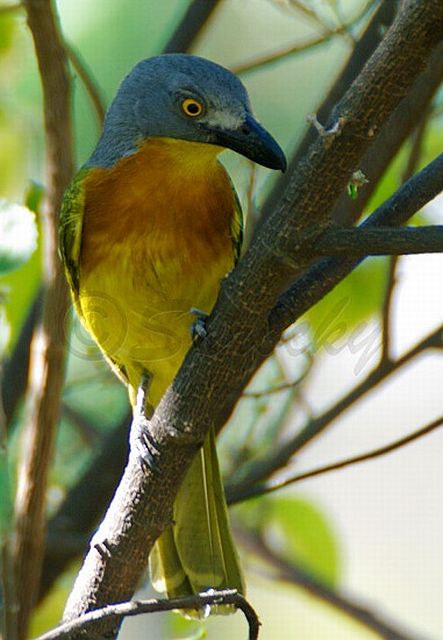 © Sprocky
© Sprocky

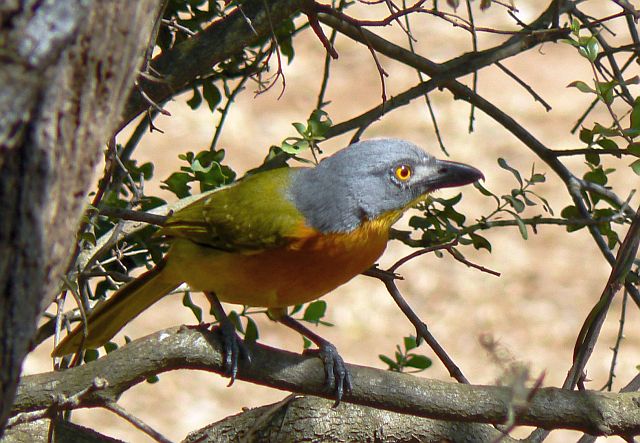 © Toko
© Toko
Swaziland, Hlande National Park
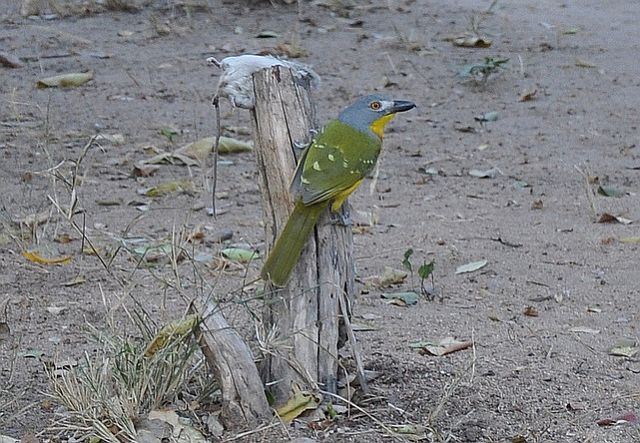 © steamtrainfan
© steamtrainfan
 © leachy
© leachy
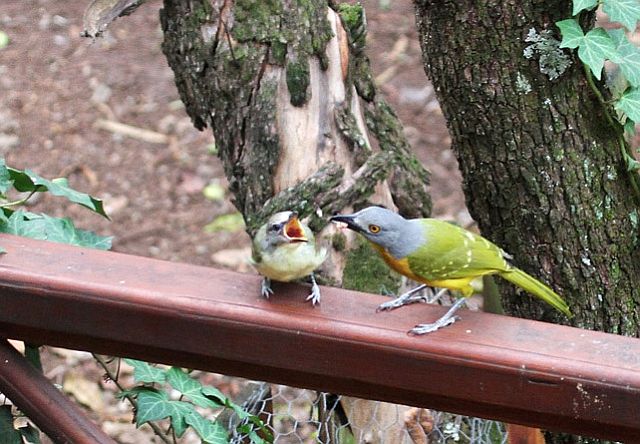 © leachy
© leachy
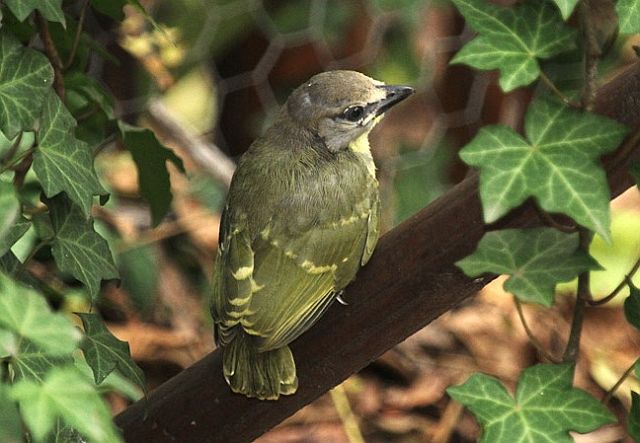 © leachy
© leachy
Immature
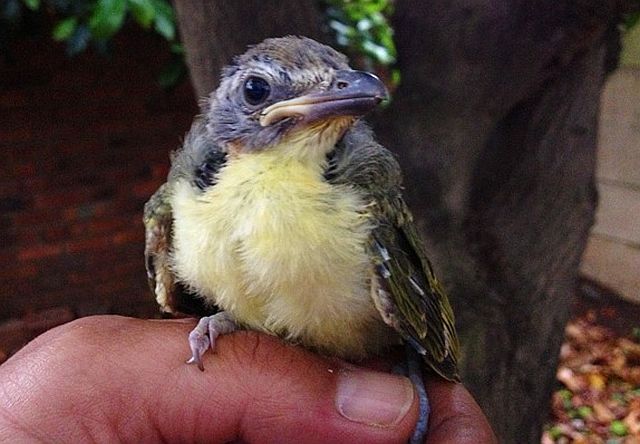
Chick
Links:
Species text Sabap1
Sabap2
 © Sprocky
© Sprocky
 © Toko
© TokoSwaziland, Hlande National Park
 © steamtrainfan
© steamtrainfan © leachy
© leachy © leachy
© leachy © leachy
© leachyImmature

Chick
Links:
Species text Sabap1
Sabap2
Sometimes it’s not until you don’t see what you want to see, that you truly open your eyes.


